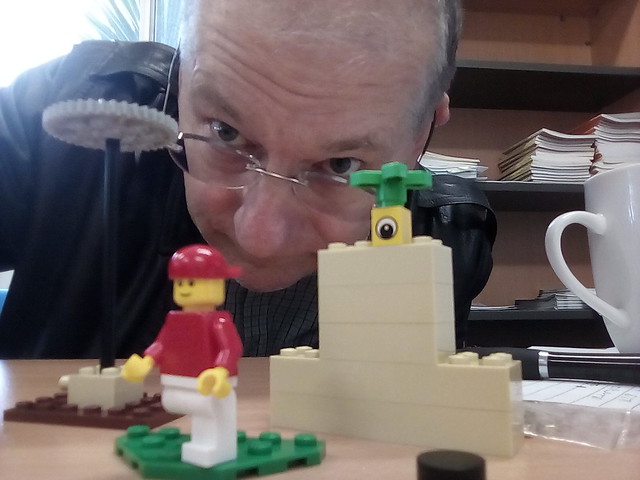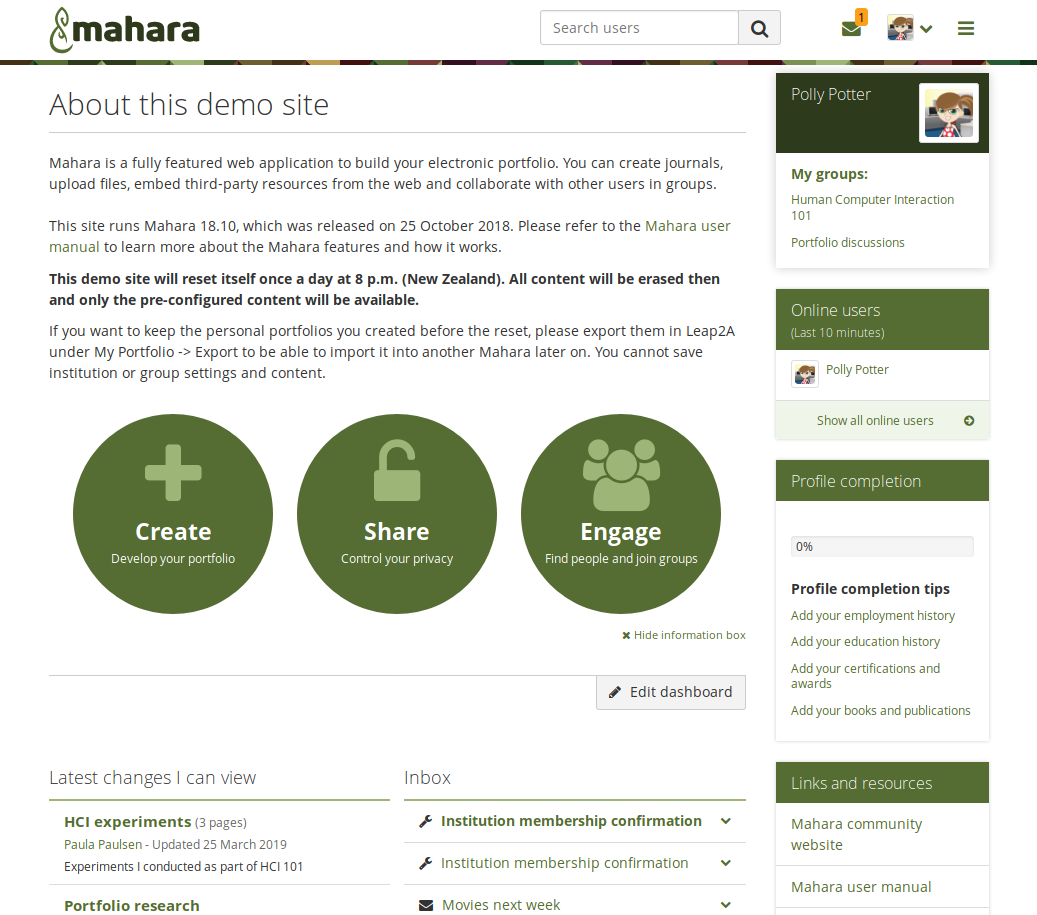These are the notes for the second of four webinars on"Engaging students in the online environment", Wednesday, 27 January at 11 am AEDT Sydney time (Tuesday, 26th, 5 pm MST in Edmonton). Please register now for the webinar and send your suggestions.
Show-Your-Work to Discourage Students Cheating Online
Records Keep Professionals Accountable
 |
| Title page, Lieutenant James Cook, Journal of the Proceedings of His Majesty's Bark Endeavour in a Voyage Round the World, 1768-1771. UK National Maritime Museum, CC BY-NC 3.0 |
Lieutenant James Cook wrote a detailed 354 page logbook as a "... trusted and coherently authored account with which to convince his backers in London" (Eóin Phillips, History and Philosophy of Science, University of Cambridge).
Traditional records are on paper. As a public servant, I was trained in how to make these harder to tamper with. Official files were kept in secure storage, administered by specialist staff who recorded who had which file out, when. Pages were required to be numbered and destroying a record without authorization was (and is) a crime. Professionals can use use this paper trail to protect the public interest, and themselves, by making it clear, who did what when. The advent of electronic documents has made it harder for the record keeper, as electron ic documents can be easily altered or deleted. However, it has also made it harder for the fraudster, as it can be hard to track down every copy and every log of changes.
Student Logbook For Work Notes
 |
| Web Social Science, Ackland, 2013 |
'I found Robert Ackland's "Web Social Science: Concepts, Data and Tools for Social Scientists in the Digital Age" (SAGE Publications, 2013), on the new books stand at the ANU Library. This is very relevant ... Ackland discusses how a "community" develops "common beliefs, norms and shared understandings. ...' From Web Social Science: Concepts, Data and Tools for Social Scientists in the Digital Age, Posted by Tom Worthington on 19 January 2014, 9:31 PM
Another reason to keep a journal was as a defense against plagiarism. At any time anyone, however senior, can be accused of using someone else's work without acknowledgment. If an examiner asked "where did this come from?", I had a day by day, draft by draft, timestamped audit trail of my work on the topic, back to when I started. This not only included the what, but the why. As an international student this was particularly important, as the norms could be different, and even down to the page size.
What Technology to Use for an Electronic Student Logbook?
"It appears to me that students can "game" assignment deadlines by creating incomplete Journal entries before the assignment deadline, then editing them after the deadline, since the Journal entry time stamps don't update after editing..." From: Journal entry time stamps - not updated when edited...?, by Robert Lyon, Mahara Forums, 30 September 2014: https://mahara.org/interaction/forum/topic.php?id=6470&offset=0&limit=10
The best tech to use is whatever you already have. I have been fortunate as a post-graduate student, in that the three institutions where I studied, all used the same electronic portfolio (Mahara), teamed with the same Learning Management System (Moodle). This made it very easy for me to create Journals in Mahara and keep them secure.
One problem, was that Mahara did not record when a student updated a journal entry, so they could game the system by creating a empty entry, then updating it later. This was later fixed, with each journal entry displayed showing both a "Posted on" and "Last updated" timestamp. I tried this out on Mahara and it seems to work. But is anyone using this?
However, if students are not using Mahara, or another journalist system already, then asking them to do this is a burden. This is also a burden for the teacher who has to learn to use just another product.. Also Mahara is much more than the student needs for a simple logbook.
Writing prompts
 |
| Dr Alisa James, SUNY Brockport |
There has been much written about the use of reflective e-portfolios for assessment. I have been trained to write, teach and assess reflectively. However this is something the average STEM student and teacher finds very difficult. James (2005) sets out how to guide physical educations students through preparing an assessed journal.
"Write a paragraph about a ... goal you would like to reach. Explain why you want to reach that goal.- Write a paragraph about what you did today that helped you to be successful in today's activities.
- Write a paragraph about your ... behavior for the day. What things might you do to demonstrate more sporting behavior in the future?
- What was the hardest thing for you to do today? Why was it hard?
- Write a paragraph that includes the cues of striking that we learned today. What will you do outside of school to practice these cues?
- Write a paragraph that includes the main aspects one should consider when developing a fitness program. Hint: Remember the FIT principle
- Write a paragraph that describes activities that you can do in your community that promote cardiovascular endurance .
- Write a paragraph that explains the difference between verbal and nonverbal communication. Why is it important to use both in cooperative activities? Be sure to give specific examples of both verbal and nonverbal communication." From p.43, James, Alisa, "Journaling as an Assessment Option" (2005). Kinesiology, Sport Studies and Physical Education Faculty Publications. 78. (numbering added) https://digitalcommons.brockport.edu/pes_facpub/78
Writing prompts are more important for an e-journal used with an online course, than for the face to face classes James (2005) discusses. As the student will be mostly studying asynchronously, the teacher is not there to be saying "put a copy of that in your journal now". This has to be explicitly stated in course materials, ideally as part of a assessed task, so the student has an incentive. This can also be a good point. I suggest to mark a point in the course, an approach of synchronization of asynchronous learning (Worthington, 2013).
James' prompts are ordered from more to less reflective. The first four are about the individual student goals, success, behavior, difficulties. The next three are about future plans of the student to learn skills. The last is a more traditional study question about the course material. These questions are not that different to ones which might be asked as study aids in any course. One of my frustrations as a student was that my answers to such questions were never looked at by anyone, let alone count towards assessment. In theory they help with learning, but in practice, like any student, I would tend to focus on what got looked at and especially marked. The e-journal gets around this problem by having answers go somewhere, perhaps be looked at and help me at least pass the course.
Logbook Entries can be Visual
 |
| My teaching philosophy, expressed in Lego, 2017 |
Logbook entries need not be just text, there can be diagrams, photographs, and with an electronic journal, video. Dr Stephen Dann, has adapted the Lego Serious Play technique for reflection workshops. In 2017 Dr Dann ran a workshop for ANU staff working on their reflective e-portfolio for the Higher Education Academy Fellowship. In 2018 he ran a similar exercise for ANU Techlauncher students to consider their role in a group project. In each case the student is asked to make something with building blocks representing the topic and then talk about it. By talking about it, the students are encouraged to talk about themselves. They are also encouraged to take a photograph of their work.
Moodle Wiki for a Student Logbook
The Mahara Journal looked promising, especially as it is usually installed alongside Moodle. However, this would still be an additional tool students and staff would have to become familiar with. An alternative which looks promising is the Moodle Wiki. This can be set up so each student gets their own. I have created a logbook template which can be provided in the Wiki.
My template has a paragraph of explanatory text, then sections for the student to fill in. The student could create extra pages if they have a lot of content. But I expect one page will do for a typical student. They just click on "edit" the heading for a week, and put in some content.
The fill in the blanks sentences are adapted from James (p.43, 2005). The topics for each week are from the Australian National University's Techlauncher program (Awasthy, Flint, and Sankaranarayana, 2017). Questions for the Work Portfolio (Weeks 4 and 8) were suggested by Tempe Archer, ANU Careers. The idea here is to provide a prompt for the student each week to start writing and avoid presenting then with a confronting blank page. The students are asked to write about the activity set for that week and a specific aspect of it.Jacques, Ouahabi and Lequeu (2020) refer to the use of logbooks in Google Drive for French first year first year engineering students learning online, but unfortunately give no more details. Kumar, Silva and Prelath, R. (2020) mention not having a project logbook as a problem for studio based learning in a Malaysian course, but again provide no more details.
Reference
Awasthy, R., Flint, S., & Sankaranarayana, R. (2017, April). Lifting the constraints—Closing the skills gap with authentic student projects. In 2017 IEEE Global Engineering Education Conference (EDUCON) (pp. 955-960). IEEE. URL https://doi.org/10.1109/EDUCON.2017.7942964
James, Alisa, "Journaling as an Assessment Option" (2005). Kinesiology, Sport Studies and Physical Education Faculty Publications. 78.
https://digitalcommons.brockport.edu/pes_facpub/78Jacques, S., Ouahabi, A., & Lequeu, T. (2020). Remote Knowledge Acquisition and Assessment During the COVID-19 Pandemic. International Journal of Engineering Pedagogy (iJEP), 10. URL https://www.thierry-lequeu.fr/data/JACQUES-04.pdf
Blockchain to Stop Academic Plagiarism
The Creative Commons licenses, commonly used for open materials, all have a "by attribution" requirement: "... the original creator (and any other nominated parties) must be credited and the source linked to". However, this is only a legal and moral requirement, the technology doesn't enforce it. Professor McGreal proposes to go a step further and use a blockchain to securely record who first created the work, and all the changes made and by whom.
While technically feasible, using block chain would throw up some challenges. As an example, nothing can ever be deleted from the blockchain, so if there was something which was incorrect, or harmful, or illegal, it would be there in perpetuity.
The idea of using blockchain in academia might have other uses. Recently I have been considering how students could record their progress with assessed work, such as assignments. One problem is to find an easy way for students to record what they did, but not be able to falsify the record. I have been looking at using some form of electronic logbook stored on the educational institution's system, so the student can't tamper with it. An alternative would be a blockchain.
Reference
McGreal, Rory. (January 20, 2021) How blockchain could help the world meet the UN’s global goals in higher The Conversation. URL https://theconversation.com/how-blockchain-could-help-the-world-meet-the-uns-global-goals-in-higher-education-152885
The video presentation contains images that were used under a Creative Commons License. Click here to see the full list of images and attributions:



No comments:
Post a Comment